Search
Remove Ads
Advertisement
Summary 
Loading AI-generated summary based on World History Encyclopedia articles ...
Search Results
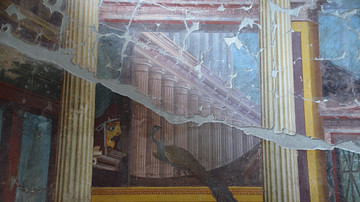
Article
A Visitor's Guide to Oplontis, Stabiae & Boscoreale
More than 2,000 years ago, extremely wealthy Romans lived on the sunny shores of the Bay of Naples at Pompeii and in opulent villas nearby, unconcerned about Mount Vesuvius in the distance. Julius Caesar (100-44 BCE), Augustus (r. 27 BCE...
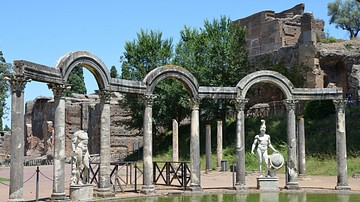
Article
Visitor’s Guide to the Monuments of Hadrian’s Villa
Hadrian’s Villa near Tivoli, Italy, is an opulent, sprawling garden-villa covering some 120 hectares (296 acres). It was built by Emperor Hadrian (76-138 CE) between 125-134 CE for use as his country estate, although the land may have originally...
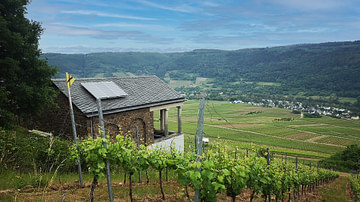
Article
A Roman Trail in the Moselle Valley
The Moselle Valley is Germany's oldest winegrowing region. The Romans brought viticulture to this area and planted vines along the Moselle River 2000 years ago. After settling the region c. 50 BCE and establishing the city of Trier (Augusta...
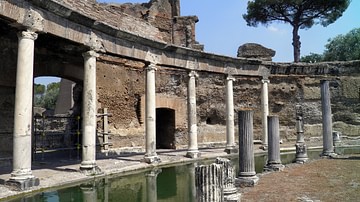
Image
Maritime Theatre, Hadrian's Villa
The Maritime Theatre at Hadrian's Villa in Tivoli (Italy) was a complex with 35 room built on a circular island surrounded by a moat. It is generally thought to have been dedicated to Hadrian’s personal use.
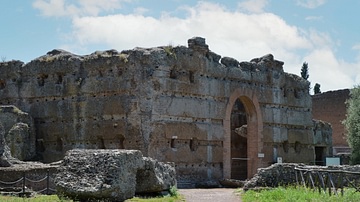
Image
Vigilant’s Station, Hadrian's Villa
The vigilant's station is a multi-level structure in Hadrian's Villa in Tivoly (Italy). It is referred to as "service buildings", and it is often associated with the vigilants or guards who protected the villa.
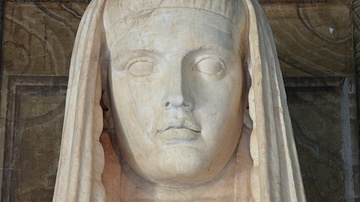
Image
Isis-Sothis-Demeter from Hadrian's Villa
Monumental bust of the goddess Isis-Sothis-Demeter, from the Palestra at Hadrian's Villa in Tivoli (Italy), 131-138 CE. Now in the Vatican Museums, Rome.

Image
Canopus, Hadrian's Villa
One of the most striking and best preserved parts of Hadrian's Villa at Tivoli (Italy) consists of a pool named Canopus and the so-called Serapeum, a monumental summer cenatio with a nymphaeum set at the southern end of the Canopus.
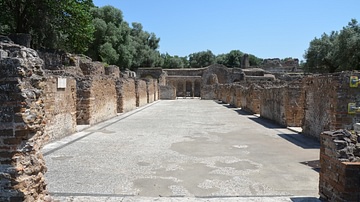
Image
Hospitalia, Hadrian's Villa
The Hospitalia at Hadrian's Villa in Tivoli (Italy) was a two-story building with 10 guest rooms on the first floor off a long and wide central hallway, at the southern end of which was a hall. The structure dates to the first phase (118-125...
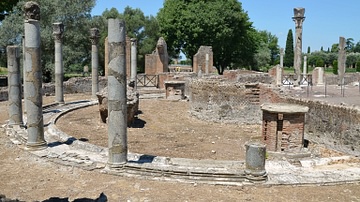
Image
Three Exedras Building, Hadrian's Villa
View of one of the gardens of the Three Exedras building at Hadrian's Villa in Tivoli (Italy). The building was a semicircular arcaded triclinium (dining room) with a large, rectangular fountain located to the north of the structure at the...
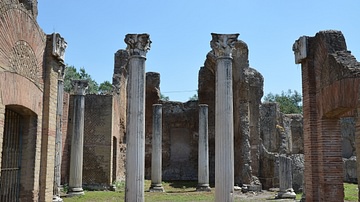
Image
Dining-room of Piazza d’Oro, Hadrian's Villa
The Piazza d’Oro (Golden Hall) is a vast building with a quadriporticus garden and water basins located in the northern edge of Hadrian's Villa in Tivoli (Italy). The southern side of Piazza d’Oro has a cenatio (dining-room) and perhaps also...